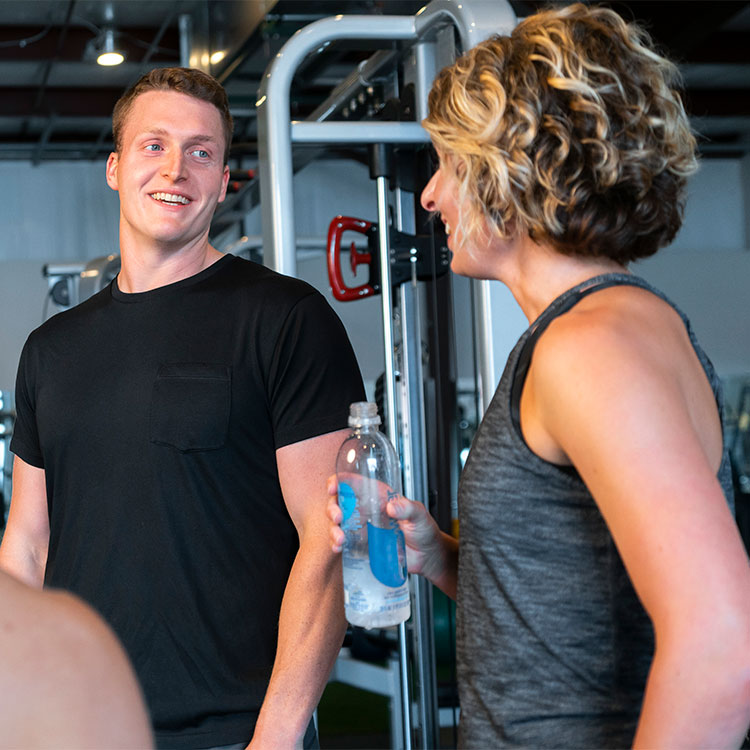Health & nutrition insights.
Why The Scale Is Sabotaging Your Success
As a nutrition and exercise professional, I talk to people about their bodies pretty much every day. Weight loss is one of the most common reason people come work with us, so naturally, the scale is always a dominant feature when tracking progress. I see all too often that people are focused on getting that number where they want it, and not as much concerned about the daily habits that they need to have in order to get there. Many people get on the scale every morning and let that number dictate whether they are happy or sad, feel empowered or defeated, or take a “why bother attitude” and give up on their healthy habits altogether. I encourage you to stop letting the scale have so much control over you, because body weight is only part of your picture of health. Below, I will explain more effective ways to monitor your progress. If you are working with us at AYB, we can monitor this for you so you can focus on the two things that will help you achieve your goals: consistent, effective exercise and healthy eating.
All methods of measuring have limitations, but in research, the 7 site skinfold test and waist circumference measurements are two accurate and accessible methods for monitoring progress and estimating disease risk. These methods are so much more effective than just getting on the scale. Body weight fluctuates so much based on water weight, which can be something you ate yesterday or even hormones. The scale also does not tell you how much muscle mass you have and how much your bones and other lean tissue weigh. Health and aesthetics are more related to body fat, not just body weight, so it is important to know what your body fat is when assessing your progress.
In the 7 site skinfold test, we measure your subcutaneous fat, which is the fat right under your skin, on 7 different spots. These measurements are done with skin calipers and are put in a validated formula to estimate your body fat percent. Using quality calipers, like Lange Calipers, and having a trained professional doing the measurements is key to getting accurate results. Body fat percent allows us to see how much lean mass you have and how much fat mass you have, which is a better picture of your health. When you lose fat and put muscle on because you are eating well and exercising, you can see that with body fat percent measurements, and it may not be apparent on the scale, causing frustration. We recommend that you get your body fat percent tested every 4-6 weeks, so you can see your progress and adjust your nutrition and exercise plan as needed to keep moving forward to your goal. Here are the recommendations for body fat percent:
| Body Fat Goals | Women | Men |
| Essential Fat for Health | 10-12% | 2-4% |
| Athletes/Competitive | 12-20% | 4-13% |
| Healthy/Fit | 18-24% | 10-17% |
| Acceptable | 25-30% | 18-25% |
| High Health Risk for Diabetes, Heart Disease, Early Death, and Cancer | Over 30% | Over 25% |
If your body fat percent is in the acceptable or healthy range, but you carry most of your weight in your abdomen, there is still increased risk for disease and you are not at your optimal weight for health. I recommend measuring waist circumference in addition to doing the skinfold test, because waist circumference is an independent risk factor for chronic diseases like diabetes, cancer, high blood pressure, early death, and heart disease. Here are the waist circumference recommendations:
| Waist Circumference Risk Category | Women | Men |
| Very Low | < 27 inches | <31.5 inches |
| Low | 27.5-35 inches | 31.5-39 inches |
| High | 35.5-43 inches | 39.5-47 inches |
| Very High | >43.5 inches | >47 inches |
Taking both body fat percent and waist circumference gives you an accurate assessment of your current disease risk and allows for you to make goals that are going to actually improve your health instead of an arbitrary number on the scale that you are shooting for. Contact us to set up this inexpensive, short assessment so you can take control over your health and monitor your progress in a way that is informative and useful instead of just relying on the scale. Weighing yourself as your only tool for progress can be unreliable and frustrating, leading to giving up on your healthy lifestyle, so don’t let the scale sabotage you! Take control over your results and know how your body is responding to your eating and exercise plan so you can make adjustments as needed. Understanding where you are and where you need to be is a big step in Achieving Your Best Health!
Cassie Dimmick, MS, RD, CSSD

